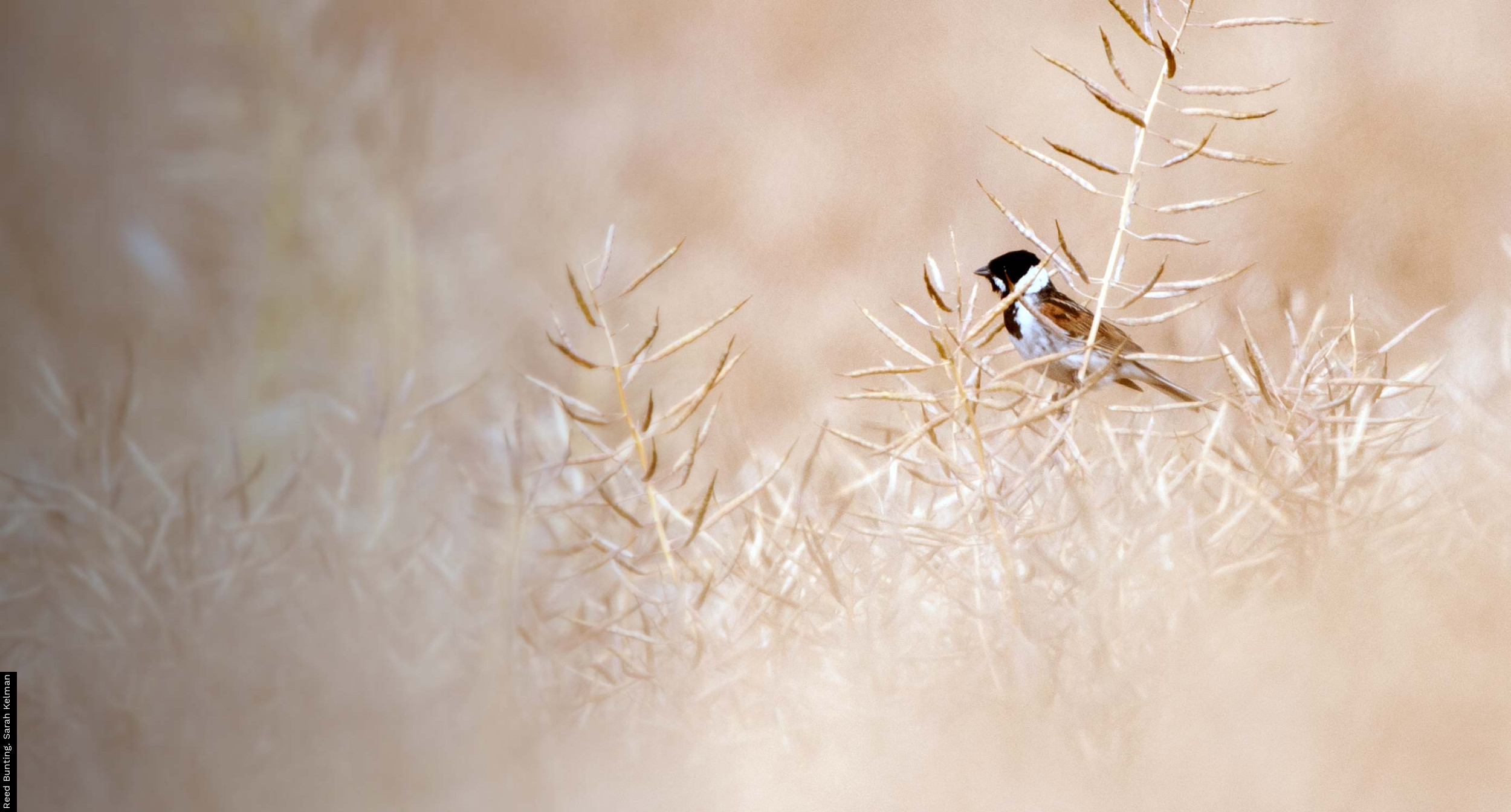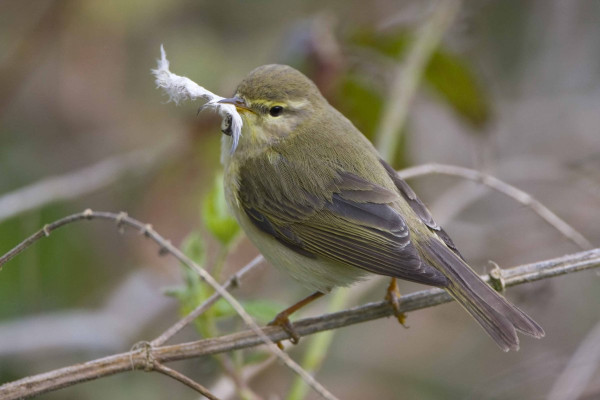at least in part, by a reduction in breeding success.
NOTE: Species accounts are no longer included within the BirdTrends report and all links to individual species in this BirdTrends report now point to the relevant species page in BirdFacts. Species trends can now be viewed in the "Trends Explorer" which allows you to view a range of temporal trends for each species.
Our best measure of nest-level breeding success is Fledglings Per Breeding Attempt (FPBA), calculated from brood sizes and nest failure rates recorded by participants in the Nest Record Scheme, which indicates the mean number of young fledging from each nest in a given year.
FPBA has changed significantly and is currently lower than in the late 1960s for 16 species: three red-listed species (Wood Warbler, Tree Pipit and Linnet), six amber-listed species (Nightjar, Moorhen, Willow Warbler, Dunnock, Meadow Pipit and Reed Bunting) and seven green-listed species (Swallow, Great Tit, Long-tailed Tit, Garden Warbler, Treecreeper, Blackbird and Chaffinch).
While the overall trend in productivity of Great Tit, Willow Warbler, Garden Warbler, Linnet and Reed Bunting has been linear, i.e. falling over the last 53 years, trends for the other 11 species are curvilinear and for some species in this latter group, FPBA is currently only marginally lower than in the 1960s. For ten of the species showing curvilinear trends, FPBA increased between the mid 1960s and mid 1980s or mid 1990s and decreased thereafter; whereas in the case of Nightjar, productivity decreased from the mid 1960s until the mid 2000s but has increased slightly over the last ten years.
Productivity declines in migratory species: Nightjar, Swallow, Willow Warbler, Garden Warbler and Tree Pipit, may be driven in part by birds returning in poorer condition as a result of changes in habitat or climate on their African wintering grounds. For Willow Warbler and Garden Warbler there is evidence that conditions on the breeding grounds and, in the case of the latter, grazing pressure from deer, may also be important. The majority of species exhibiting productivity declines, including residents such as Reed Bunting, are reliant on invertebrates to feed their young and there is increasing evidence that climatic change and/or anthropogenic factors, such as pesticides, are leading to a reduction in the size of prey populations. Additionally, climatic warming may have resulted in a developing asynchrony between laying dates and the availability of insect prey on the breeding grounds. So, although this report shows that many species are advancing laying dates (see early breeding), for some species these advances may not be sufficient to match the advances in peak food availability. Long-distance migrants are thought to be particularly susceptible to such disjunction but residents may also be affected, particularly those reliant on seasonal peaks in caterpillars, such as Great Tit, Chaffinch and, to a lesser extent, Treecreeper. However, numbers of Great Tit have increased over period covered by this report and we cannot exclude the possibility that the observed reduction in breeding success is due to density-dependent processes. Lack of food for nestling and parent Linnet due to a paucity of stubbles and weeds in more intensively farmed agricultural habitats is likely to have contributed to the reduction in the species' breeding success. The driver for increased Moorhen nest failure is at present unclear, but increases in aquatic mammalian predators and Coot populations have been proposed as potential causes.
The key breeding success parameter from CES ringing data, the ratio of juveniles to adults captured, provides an integrated measure of productivity across the whole season, and reflects both the number of young leaving the nest and the survival of these juveniles in the first few weeks after fledging. According to this measure, productivity has fallen significantly for ten of the 23 species monitored. Blue Tit, Sedge Warbler, Garden Warbler, Goldfinch and Reed Bunting have exhibited declines of 50% or more over the last 34 years, while reductions of between 25% and 49% have been observed for Great Tit, Blackbird, Song Thrush, Willow Warbler and Blackcap. For species such as Blue Tit, Great Tit, Blackcap and Goldfinch where population increases have occurred, reductions in productivity may be at least partly driven by density-dependent processes, whereby increased competition for resources in an expanding population will mean that some pairs occupy poorer quality habitat and reduces the mean breeding success per pair. However, if this were the case we would expect productivity to have improved during the recent decline in Blue Tit abundance since the mid-2000s; however it is possible that intraspecific competition with Great Tit may mean that some density-dependent effects are still occurring. Similarly, Garden Warbler could potentially have been affected by intraspecific competition with Blackcap. Alternatively, climate induced mismatch with invertebrate food supplies may be impacting negatively on productivity and/or post-fledging survival, particularly in the case of the caterpillar-dependent tit species. For Great Tit and Blue Tit, increased incidences of severe weather such as heavy rainfall during the breeding season as a result of climate change is another possible contributor to declines in productivity. Song Thrush and Sedge Warbler have experienced significant declines in abundance, either on CES sites or more widely (based on CBC/BBS figures), but previous analyses suggest that falling survival rates are likely to have been a more important contributor to population changes than reduced productivity. There is, however, evidence that a reduction in the number of offspring produced may be preventing recovery of the UK Reed Bunting population.
This report should be cited as: Massimino, D., Woodward, I.D., Hammond, M.J., Barber, L., Barimore, C., Harris, S.J., Leech, D.I., Noble, D.G., Walker, R.H., Baillie, S.R. & Robinson, R.A. (2020) BirdTrends 2020: trends in numbers, breeding success and survival for UK breeding birds. BTO Research Report 732. BTO, Thetford. www.bto.org/birdtrends






Share this page